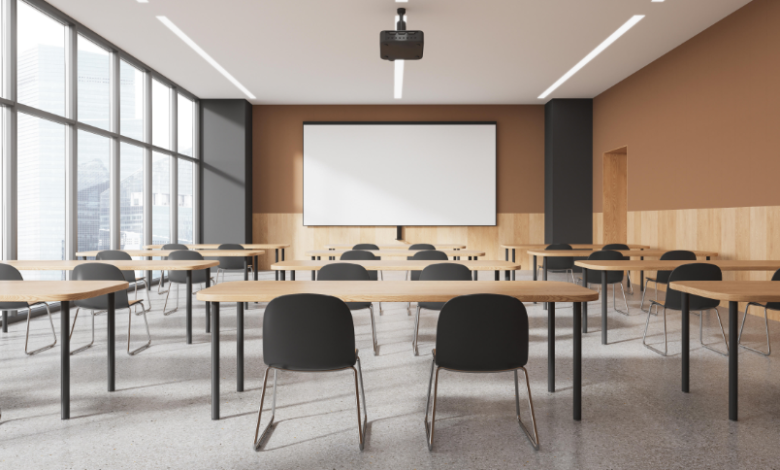Training Room Furniture Designs That Support Collaboration

The way we train and develop talent has evolved over time and so has the training room. With the traditional rooms (with rigid rows of desks and chairs) no longer meeting the needs of dynamic, team-based learning., organizations are embracing collaborative training environments that foster interaction, flexibility, and engagement. And the design and layout of training room furniture must adapt to support this shift. With the right furniture, your space can be a place a space where people can connect, share ideas, and work together effectively.
So, what training room furniture designs can support collaboration and improve the overall learning experience? Well, that’s exactly what this post is all about.
Modular Tables and Desks
At the heart of collaborative training spaces is modular furniture. These desks and tables can be easily reconfigured to suit different group sizes, training styles, or activities. Need to switch from a lecture format to small group work? Just move the tables into clusters or U-shapes in minutes. Some modular furniture feature nesting or flip-top tables, which allow for quick storage and reconfiguration between sessions. This flexibility helps keep training environments agile and learner-focused.
Collaborative Workstations
These specialized furniture setups are designed specifically for group interaction. They often include shared table surfaces, integrated power sources, and space for multiple users to work side-by-side comfortably. You may also find central display monitors or whiteboard space in these spaces; they are meant to encourage brainstorming and presentation. By bringing trainees together at one hub, these workstations help break down silos and promote real-time idea sharing.
Mobile Seating and Tables
Mobility is a key feature in modern training room furniture. Chairs and tables with casters (wheels) allow for quick reorganization and spontaneous group formation, while lightweight designs ensure anyone, regardless of strength, can adapt the space to suit their needs. This kind of mobility encourages an open, creative atmosphere where people feel empowered to move, communicate, and collaborate naturally.
Tiered or Stadium Seating with Collaborative Zones
Did you know that tiered seating can still support collaboration in larger training spaces or auditoriums? That’s if it’s designed correctly. By incorporating collaborative zones at different levels, trainers can mix presentations with group activities. These zones might include small round tables, lounge pods, or bench seating where participants can easily turn and interact. The combination of visibility and interaction encourages engagement at scale.
See also: How to Choose the Right screw supplier for Your Business Success
Integrated Technology Stations
Furniture that integrates tech-friendly features makes collaboration seamless in digital training sessions. For instance, tables with built-in power outlets, USB ports, and device docks allow learners to connect their laptops and other devices without disruption. Some desks also include wireless charging pads and HDMI inputs for quick screen sharing. These designs support hybrid collaboration, where in-person and remote learners engage equally.
Soft Seating and Lounge Areas
Collaborative learning doesn’t have to take place at a desk. Lounge-style furniture, such as sofas, bean bags, or cushioned benches, creates a relaxed environment for effective brainstorming. These soft seating areas can be positioned in breakout zones within the training room to offer variety and comfort. This setup is ideal for reducing stress and promoting open dialogue among trainees.
Writable Surfaces and Shared Whiteboards
While not technically “furniture,” writable tables and integrated whiteboards are crucial to collaborative training. For instance, tables with dry-erase surfaces allow team members to sketch out ideas directly at their workstation. Combined with mobile whiteboards or walls that double as writing space, these tools make collaboration visible, interactive, and dynamic. They also reduce the need to constantly move to a central board, keeping the focus on the group.
So, what’s the bottom line? Simple; designing a training room with collaboration in mind is a strategic move that empowers employees, improves communication, and builds a culture of shared growth. And yes, furniture is a tool for engagement. From modular tables to mobile chairs and lounge seating, the right furniture can foster creativity, support teamwork, and enhance learning outcomes.





